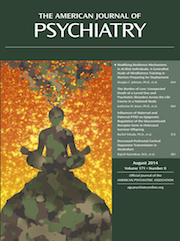Psychotherapy in the Bhagavad Gita, the Hindu Scriptural Text

The Bhagavad Gita, or Song of the Lord (1), is a Hindu philosophical scripture in the form of a dialogue between the Pandava prince Arjuna and his charioteer Krishna in the epic Mahabharata, the great tale of the Bharata Dynasty, authored by Sage Vyasa (c. 4–5 B.C.E.) (2). The dialogue occurs in the 6th chapter of the epic and has over 700 verses. The Gita is also a work of theology, spirituality, human psychology, and ethics. In recent years, Indian scholars have written that the Gita also exemplifies principles of psychotherapy, especially crisis-oriented, motivational, behavioral, humanistic, and existential (3–6).
Visual representations of the teaching by Krishna, as shown here in the painting of the Gitopadesha (Teaching of the Gita), are often displayed in Hindu homes and showcased in museums. In the depiction here, Arjuna is the commander of the righteous Pandava faction and Krishna, an incarnation (avatar) of the Hindu god Vishnu, serves as his charioteer. Faced with the dilemma of a fratricidal war against the Kauravas, his cousins, for the kingdom, Arjuna is confused and has no will to initiate the war. In this context, Krishna counsels him, as part of a deeper philosophical discourse on the cyclical nature of birth and death, permanent nature of the human soul within the transient human body, duty to righteous action, control of the senses, and perils of attachment to materialism. He propounds three pathways to transcend the human predicament, through Knowledge, Action, and Faith.
Psychotherapy in India often incorporates therapeutic pearls from the Gita (3–6). Contemporary Indian psychiatry also considers spirituality as a core ingredient of mental health (7). Following are select verses from the Gita to illustrate Arjuna’s predicament, Krishna’s analysis and counseling with elements of cognitive-behavioral and metacognitive principles, and the successful outcome of this intervention. Citing all the verses in the Gita of relevance to psychotherapy is beyond the scope of this brief essay.
Chapter 1, verses 29 and 30
Arjuna speaks (in a state of combat anxiety): Am feeling weakness of limbs, my mouth is parched, my body shivers, and I have goose bumps on the skin. My bow is slipping away, and my skin burns. I am unable to stand up, and my mind is confused.
Chapter 2, verse 47
Krishna counsels: You have to render your actions without desiring a material benefit. Let not the material fruits of action (kingdom) become your motivation. And never choose inaction either.
Chapter 2, verse 54
Arjuna speaks: Oh Krishna, what is the demeanor of one who has a steadfast and tranquil mind? What is his posture, how does he speak and what are his actions like?
Chapter 2, verse 55
Krishna replies: He who has relinquished all bodily and mental desires and is totally focused on the transcendental soul is to be called a person of steadfast mind.
Chapter 2, verses 63 and 64
Krishna continues: Dwelling on material pleasures causes attachment. From attachment springs hedonism, and from hedonistic desires arises anger. Anger clouds judgment. Errors of judgment result in loss of wisdom, leading to one’s destruction. He whose senses are controlled and free from desires and hatred attains freedom from misery and his mind becomes tranquil.
Chapter 18, verse 73
Arjuna’s final response: Oh Krishna, my (material) attachment has been removed and with your grace I have regained good judgment. I stand here with all my doubts cleared and shall implement your words.
1 (trans): The Bhagavat Geeta: Dialogues of Kreeshna and Arjoon in Eighteen Chapters with Notes. London, Nourse, 1875Google Scholar
2 Sukthankar VS (ed): The Mahābhārata for the First Time Critically Edited. Pune, India, Bhandarkar Oriental Institute, 1966Google Scholar
3 : Bhagavad Gita and psychotherapy. Bhavan’s Journal, July 2 and 16, 1978, pp 19–23, 35–38Google Scholar
4 : Comparison of the conceptualization of wisdom in ancient Indian literature with modern views: focus on the Bhagavad Gita. Psychiatry 2008; 71:197–209Crossref, Medline, Google Scholar
5 : Bhagavadgita and psychotherapy. Asian J Psychiatry 2011; 4:300–302Crossref, Medline, Google Scholar
6 : Psychotherapy—insights from bhagavad gita. Indian J Psychol Med 2012; 34:100–104Medline, Google Scholar
7 Sharma A (ed): Spirituality and Mental Health: Reflections of the Past, Applications in the Present, Projections for the Future. New Delhi, Mount Abu, Public Printing (Delhi) Service, Om Shanti Press, 2009 (http://www.ips-online.org/files/Spirituality_and_Mental_Health__1_.pdf)Google Scholar



